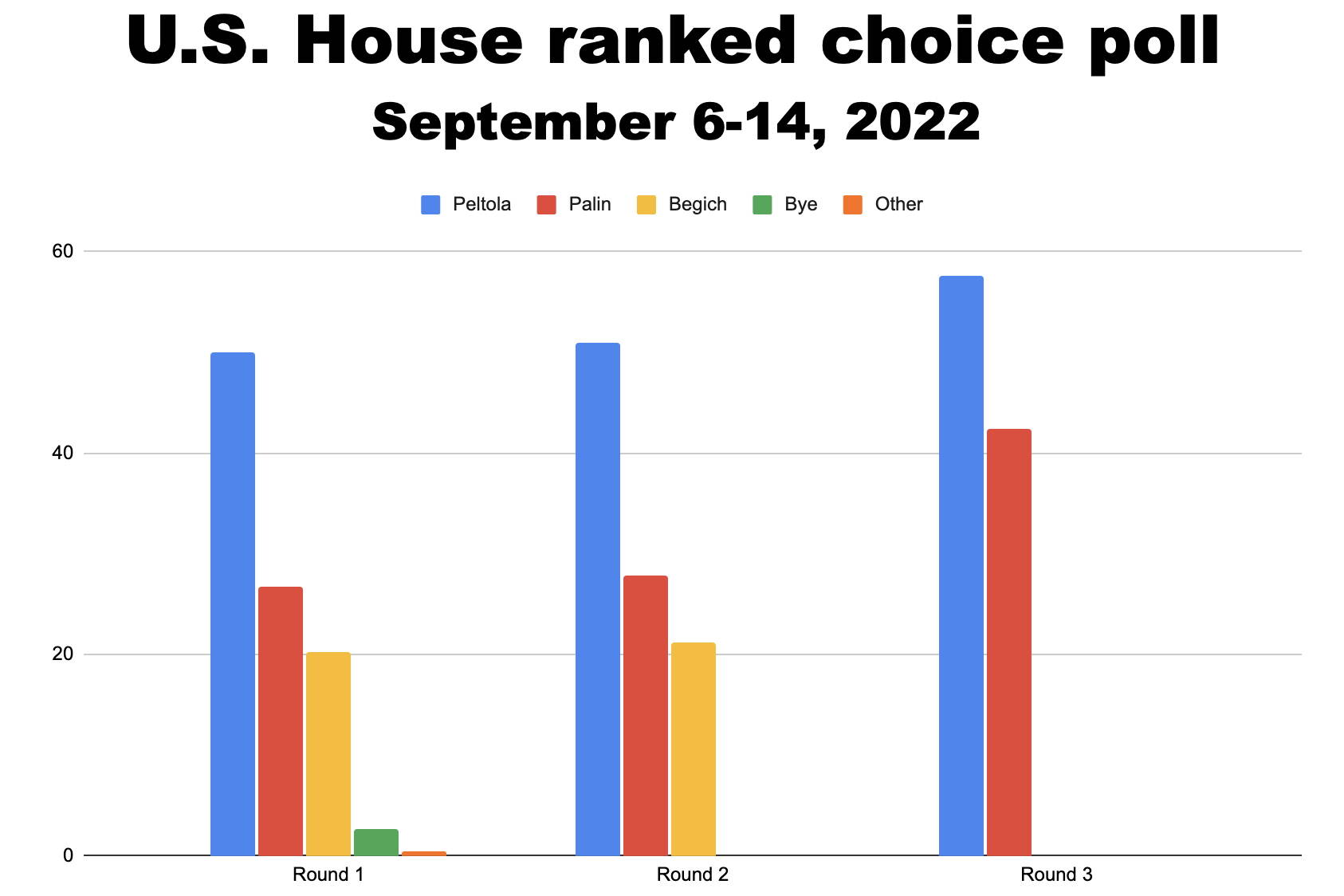A new poll shows Democratic U.S. Rep. Mary Sattler Peltola has a 23% lead over Sarah Palin for Alaska’s lone House seat about six weeks before the November general election, with Nick Begich trailing Palin by 7% in the battle among the Republicans for second on the ranked choice ballot. The poll also shows Peltola defeating Palin by a 15% margin when the ranked choice process is complete.
Peltola is the first-choice candidate of 50% of respondents, followed by Palin at about 27%, Begich at 20% and Libertarian Chris Bye at 3%, according to the poll by Alaska-based Dittman research. Peltola is favored over Palin by a 57.6%-42.4% margin after the ranked choice process, compared to the 51.47%-48.54% margin in the August special election.
But analysis by experts continues to make cases for all three candidates. The national pundit website FiveThirtyEight’s updated forecast after the poll shows Palin the favored candidate with a 50% chance of winning, while yet more political scientists joined the ranks of those declaring Begich would be the clear winner in a head-to-head match against Peltola.
“Whether Peltola can (win) the regular election in November could depend on Republicans’ ability to unite behind Nick Begich instead of the polarizing former governor, Sarah Palin — and any incumbency boost Peltola can generate in her two months in the House,” Steve Shepard, chief election reporter for Politico, wrote in an analysis earlier this month.
Palin and Begich have both issued public statements calling for the other to drop out of the race while declaring they will not do so themselves.
The poll, the first publicly released by Dittman Research for the U.S. House race this year, is roughly similar to previous polling by other companies, although it shows Peltola with a larger lead following her victory in the special election to fill the remainder of the late Don Young’s term. Peltola, the first Alaska Native in Congress and first Democratic House member from Alaska in about 50 years, also has seen an enormous increase in campaign contributions following her rise to national prominence.
The telephone survey of 394 likely voters — 51% nonpartisan/undeclared, 30% Republican, 16% Democrat — has a claimed margin of error of 4.9%.
A potentially key finding of the survey is about two-thirds of respondents would rank a second candidate on their ballot and about one-third would rank a third candidate. Many people casting first-choice ballots for either Palin or Begich in the special election did not rank the other Republican second, with many Palin voters in particular leaving the space blank, which state Division of Election statistics suggest allowed Peltola to prevail.
Contact Mark Sabbatini at mark.sabbatini@juneauempire.com.


